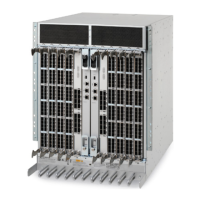TABLE 2 Port numbering and trunking port groups (continued)
Blade Port numbering Trunking port groups
These are QSFP ports 0-15. For supported QSFPs, refer
to Qualied transceivers for the FC16-64 and CR16-x
blades on page 66.
FCOE10-24 blade 0 through 23 in two vertical rows from bottom left to top right. N/A
FS8-18 blade
• 16 FC ports: 0 through 15 from bottom to top.
• Two 10/100/1000 BaseT ports: GE0 and GE1 from
the bottom.
• Trunk group 0: FC ports 0-7
• Trunk group 1: FC ports 8-15
FX8-24 blade
• FC ports labeled FC on the front panel: 0 through 11
in two vertical columns of six ports starting from the
bottom left and bottom right in the lower group of 12
ports.
• Two 10-GbE ports labeled 10GE on the front panel:
0 and 1 in the left column just above the FC ports.
• 1-GbE ports labeled GE on the front panel: 0 through
9 in both columns above the FC and 10GE ports.
• Trunk group 0: FC ports 0-1
• Trunk group 1: FC ports 6-7
• Trunk group 2: FC ports 2-5 and 8-11
High availability
The following features contribute to the high availability the device:
• Redundant, hot-swappable FRUs, including blades, power supplies, blowers, and WWN cards
• Enhanced data integrity on all data paths
• Fabric Shortest Path First (FSPF) rerouting around failed links
• Integration with Simple Network Management Protocol (SNMP) managers
• Automatic control processor failover
• Nondisruptive "hot" software code loads and activation
• Easy
conguration, save, and restore
The high availability software architecture provides a common framework for all applications that reside on the system, allowing global
and local states to be maintained through any component failure. High availability elements consist of the High Availability Manager, the
heartbeat, the fault/health framework, the replicated database, initialization, and software upgrade.
The High Availability Manager controls access to the standby control processor, facilitates software upgrades, prevents extraneous CP
failover activity, closes and ushes streams, provides ow control and message buering, and supports a centralized active and standby
state.
Reliability
The device uses the following error detection and correction mechanisms to ensure reliability of data:
• Error Detection and Correction over main control processor memory.
• Error Detection and Correction mechanism, which checks for encoder errors and fault isolation (EDFI), such as cyclic
redundancy checking (CRC), parity checking, checksum, and illegal address checking.
• Power-on self-test (POST).
• Dual control processors that enable hot, nondisruptive fast rmware upgrades.
Reliability
Brocade DCX 8510-8 Backbone Hardware Installation Guide
53-1002180-15 21

